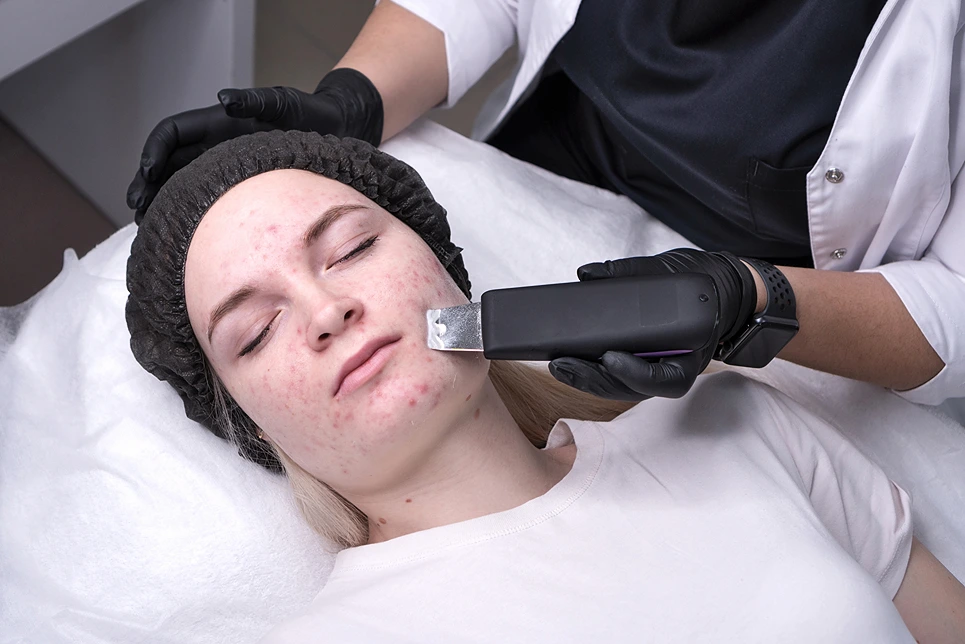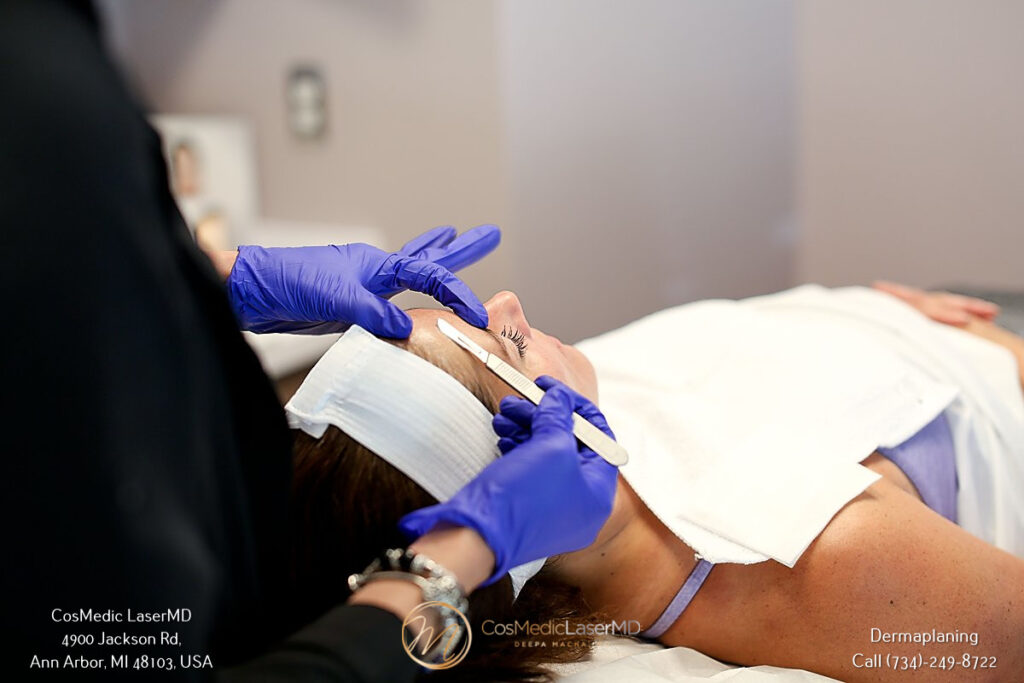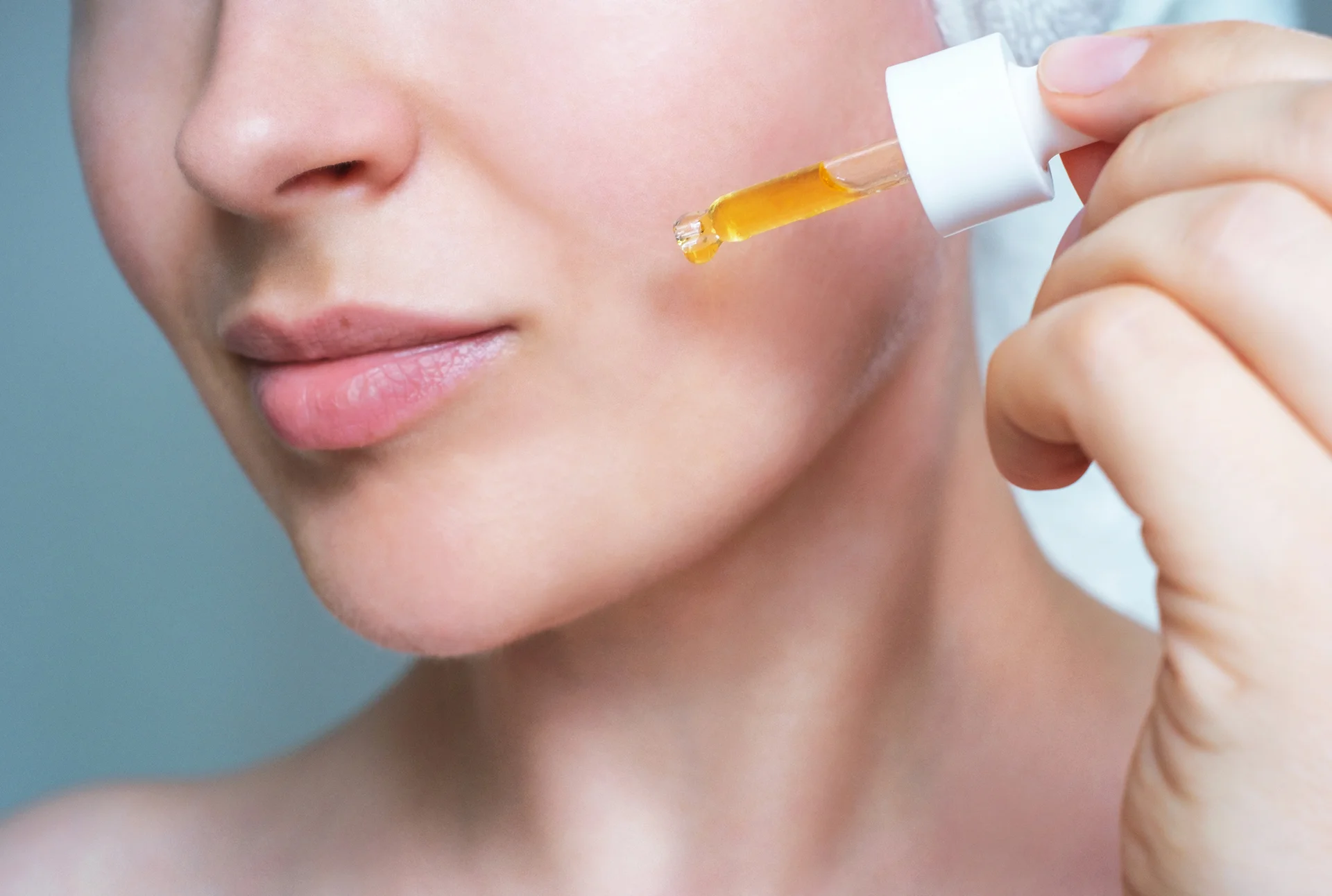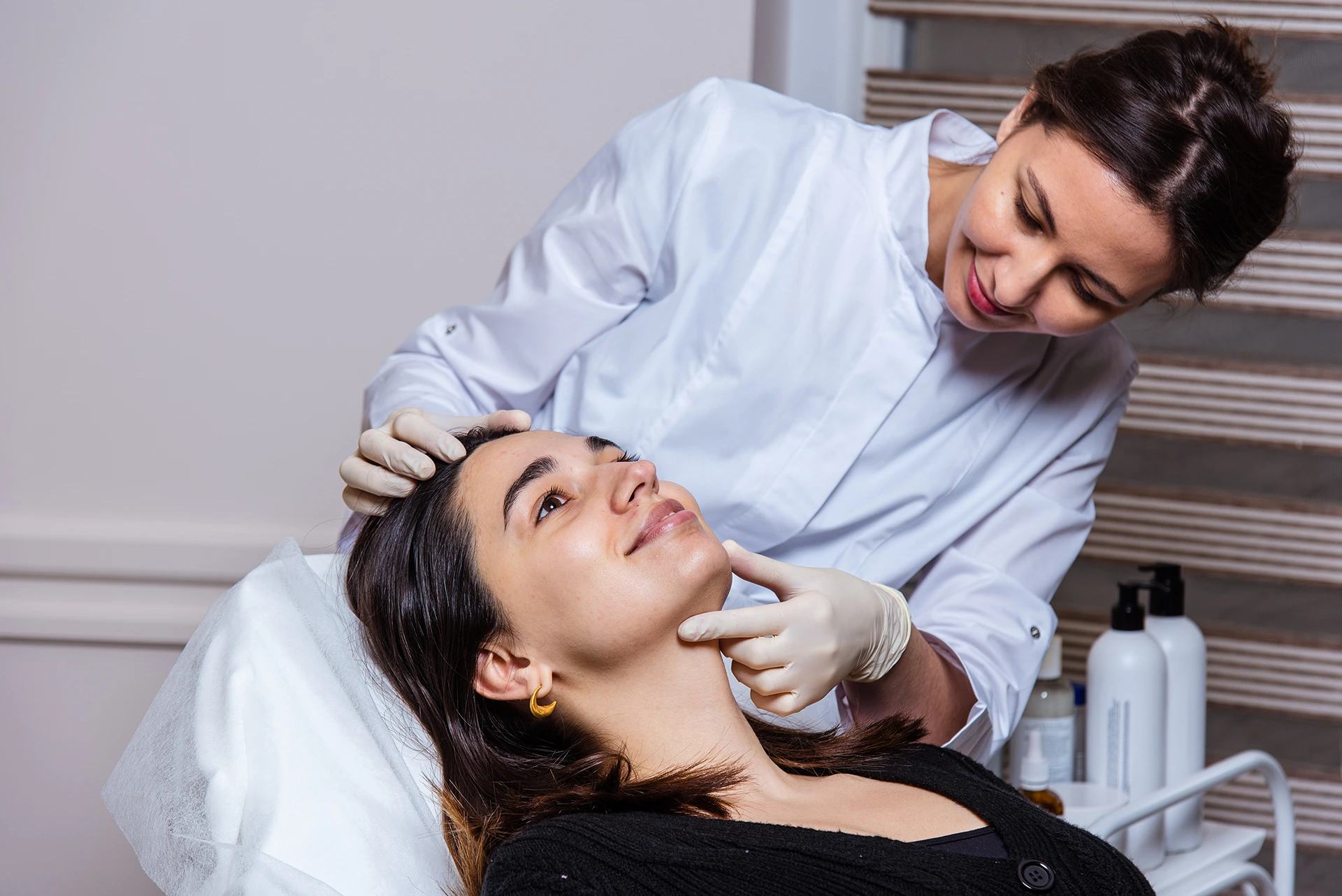If you’re struggling with acne breakouts, you’ve probably tried many different treatments and products trying to find something that works. One option you may have heard about is dermaplaning – but does it actually help clear up acne?
With this guide, you’ll understand the benefits and limitations of dermaplaning for acne and scarring so you can decide if it’s right for your skin goals.
What is Dermaplaning?
Dermaplaning is an exfoliating treatment that uses a surgical scalpel or specialized blade to gently scrape off the top layer of dead skin cells and vellus hair (peach fuzz) from the face. It’s a simple and quick in-office procedure done by an esthetician or dermatologist.
The main goals of dermaplaning are:
- Remove excess dead skin cells, debris, and fine peach fuzz
- Make the skin’s surface extremely smooth
- Allow skincare products to penetrate better
- Reduce the appearance of acne scars
- Give the face a glowing, brighter complexion
Many people get dermaplaning done as a way to rejuvenate dull or uneven skin tone, as well as deal with acne concerns. But how well does it actually work for acne and acne scarring?
So How Effective is Dermaplaning for Acne and Scars?
While results can vary, some dermatologists and estheticians see excellent effects from dermaplaning for acne-prone skin and acne scars when performed properly and consistently.
For mild to moderate inflammatory acne, dermaplaning can help get breakouts under control by:
- Removing pore-clogging dead skin cells, debris, and excess oil. This helps prevent new pimples from forming.
- Allowing acne medications to penetrate deeper. Dermaplaning preps the skin for better absorption of topical acne creams or gels.
- Reducing acne-causing bacteria. Exfoliation decreases microbial growth on the skin’s surface because dead skin cells and excess oils, which can contribute to the growth of bacteria, are removed from the skin.
- Preventing acne scarring by clearing up breakouts before they worsen.
For treating acne scarring, dermaplaning is an excellent option for smoothing and reducing the appearance of:
- Post-inflammatory erythema – the red or pink discoloration left after a breakout.
- Post-inflammatory hyperpigmentation – the dark spots or discoloration that remains after acne heals.
- Very shallow, minor pitted scarring.
- Surface scarring and uneven texture.
- Enlarged pores from chronic acne.
But it’s important to note that dermaplaning is a surface-level treatment.
While it can help with superficial acne scars, it’s not typically effective for deep or stubborn acne scars. For these types of scars, more intensive treatments, such as laser therapy or dermal fillers, may be necessary.
What is the Dermaplaning Procedure Like?

The actual dermaplaning process is very simple and straightforward. First, the face is cleansed and a topical numbing cream may be applied. This helps make the treatment comfortable.
During the procedure, the esthetician will hold the skin taut with one hand. With the other hand, they use short, gentle strokes to scrape off dead skin cells and vellus hair with a surgical scalpel or blade. This dermaplaning blade removes the topmost layers of skin very precisely.
The whole dermaplaning process for the full face takes about 30-45 minutes. Usually 2-4 passes with the dermaplaning blade are done on each area of the face to fully exfoliate the skin.
While patients may feel some slight tingling sensations, dermaplaning is not generally painful since it only removes the outermost layers of the epidermis.
After the treatment, the skin is soothed with a calming gel or serum.
Does Dermaplaning Help Active Acne Breakouts?
Dermaplaning is generally not recommended for those with active inflammatory acne or breakouts. The scraping motion can potentially spread bacteria across the skin and worsen acne in some cases.
However, dermaplaning may be helpful for non-inflamed acne like blackheads and whiteheads. Gently exfoliating and removing the top layer of dead skin cells can help dislodge congestion in pores.
It’s best to avoid dermaplaning if you have painful, red breakouts. But once the active inflammation subsides, you may see some benefits from the treatment. Always consult a dermatologist first about your specific skin condition.
How Does Dermaplaning Improve the Appearance of Acne Scars?
While dermaplaning may not prevent acne, it shows more solid results for reducing the appearance of acne scars. This is primarily due to the exfoliating effects.
Before and after photos often show dermaplaning improves the appearance of shallow acne scars and discoloration.
However, there are some limitations:
- Severe ice pick or deep boxcar scars may not see major improvement with dermaplaning alone.
- Multiple sessions are needed over several months as part of a comprehensive approach.
- Sun protection and proper post-treatment skincare is essential to maintain results.
- While dermaplaning can reduce the visible depth and discoloration of superficial acne scars, deeper scars often require procedures like laser skin resurfacing, dermal fillers or other collagen-stimulating treatments.
It’s essential to understand that dermaplaning is not a treatment for active acne. Directly dermaplaning over inflamed acne can cause irritation and potentially spread bacteria, worsening the condition.
How Long Do Dermaplaning Results Last?
For smoother, glowing skin, dermaplaning results can last up to 3 weeks as the new layer of skin cells emerges. But to maintain the benefits long-term, it’s recommended to get dermaplaning done once a month.
For acne scars, more sessions are usually needed to see significant improvement. After an initial series of 4-6 treatments, maintenance sessions every 4-6 weeks can help sustain the results.
Consistency is key if you want dermaplaning to help minimize your acne scars or keep your acne breakouts under control. Meeting with your esthetician monthly is ideal.
Caring for Skin After Dermaplaning
After dermaplaning, it’s essential to follow a proper skincare routine to prevent acne from returning and to avoid complications.
Here are a few tips:
- Always use SPF 30+ sunscreen to prevent sun damage that could worsen acne scarring
- Avoid products with retinoids, glycolic/salicylic acid, Vitamin C, etc. for 3-5 days to avoid irritation
- Stay away from hot tubs, saunas, swimming pools, etc. which contain bacteria
- Don’t pick at skin to avoid infection risk
- Use soothing products like aloe vera gel to relieve sensitivity
- Moisturize daily to replenish hydration and help heal the exfoliated skin
The Takeaway

Dermaplaning can be an excellent treatment option for certain acne and acne scar concerns. It helps exfoliate away dead skin cells, debris, and oils that clog pores and lead to breakouts. The results for improving uneven tone and shallow acne scars can also be remarkable.
Just be cautious about dermaplaning if you have active inflammatory acne. And always consult a dermatologist experienced in the treatment to assess your suitability first. Combine it with other acne-fighting treatments like chemical peels or microneedling for optimal results.
Overall, in-office dermaplaning performed monthly by a skilled esthetician or dermatologist can produce great results for both inflammatory acne and acne scarring concerns. Just be sure to receive treatments consistently over time for optimal, longer-lasting effects.
When you’re ready to unveil your healthier and clearer skin, then you can book a dermaplaning consultation at CosMedic Laser MD today. Our team of experienced professionals will evaluate your skin and guide you through the best treatment options. Let us help you put your best face forward with dermaplaning.
With realistic expectations and proper skincare, dermaplaning can help you put your best face forward by combating acne and acne scarring. Consider giving it a try if you want revitalized, glowing skin!







